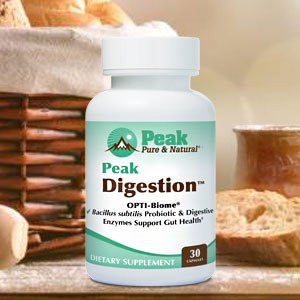Get Easy Health Digest™ in your inbox and don’t miss a thing when you subscribe today. Plus, get the free bonus report, Mother Nature’s Tips, Tricks and Remedies for Cholesterol, Blood Pressure & Blood Sugar as my way of saying welcome to the community!
New gluten-free ‘flour’ packed with nutrition and a dash of caffeine

Giving up all wheat products can be a daunting prospect for some who embark on a gluten-free diet. I remember when one of my friends was forced to go gluten-free after a diagnosis of celiac disease, she was anguished at the thought of never enjoying freshly baked bread or bagels again.
Luckily for her and other gluten-free adherents who love their baked goods, the food industry has filled the gap with tons of tasty gluten-free breads, crackers, cookies and cakes.
There is also a plethora of gluten-free flours now available to those who prefer to bake their own gluten-free breads and treats. Some of those are milled from gluten-free grains such as rice, amaranth and quinoa, while others are made up of ground nuts or seeds.
One of the downsides of gluten-free baking is that the flours used often don’t contain the same level of fiber and nutrients found in gluten-containing grains like wheat, barley and rye. For instance, baked goods made with whole-grain wheat contain plenty of healthy fiber as well as B vitamins, protein, antioxidants and trace minerals like iron, zinc, copper and magnesium.
Flours made from nuts like almonds, hazelnut and walnut do contain some protein and fiber. But if you want an added boost of fiber and nutrition, there’s another alternative flour you can try…
The benefits of coffee flour
Naturally gluten-free coffee flour is made from the leftover fruit that covers the coffee bean. This fruit, or “cherry,” encases the coffee bean and is usually discarded after the coffee bean is harvested.
Coffee flour is created by drying and milling these leftover coffee cherries into a fine powder. Billions of pounds of coffee cherries are discarded every year, so turning them into coffee flour is eco-friendly.
One tablespoon of coffee flour has 35 calories and contains 6 grams of fiber and 1 gram of protein. It’s also rich in antioxidants and provides 14 percent of the potassium, 15 percent of the iron, and 4 percent of the calcium required daily.
«SPONSORED»
Coffee flour does contain more caffeine than a can of cola or a cup of black tea, but it has less caffeine than coffee itself. One tablespoon of coffee flour contains 60 mg of caffeine, compared with an average of 95 mg of caffeine in an 8-ounce cup of brewed coffee.
Even though it’s from the coffee plant, coffee flour doesn’t really taste or smell like roasted coffee beans. It has a flavor that has been described as slightly fruity, tart and bitter, more like a fruity cocoa powder than coffee. It’s considered a good addition to sweet recipes, but given its flavor profile probably won’t work with more savory dishes.
Using coffee flour
To use coffee flour in baking, experts recommend combining it with another flour you like to use, replacing two tablespoons of every cup of that flour with coffee flour. Be aware that you may need to add more fluid due to coffee flour’s high fiber content.
Because of its flavor profile, it goes best in recipes that use brown sugar or molasses, though it’s also compatible with chocolate-forward goods like brownies. You can also use coffee flour as a nutritional supplement, adding a tablespoon or two to your daily smoothie, hot cereal or chia pudding.
Coffee flour isn’t as widely available as other gluten-free flours, but you can find it in some Trader Joe’s locations as well as health-food specialty stores. Or you can order it online from providers like The Coffee Cherry Co. and Nuts.com.
Sources:
Is Coffee Flour a New Fair Trade Nutritional Powerhouse? — Quick and Dirty Tips
Coffee Flour Health Benefits and Uses — Verywell Fit
Going Gluten Free? Necessity for Some, Risky for Others — Easy Health Options













